Here in this article you learn about the differences in Seiko progressive lenses and get a recommendation when to choose which lens design.
The best Seiko progressive lens is the Prime Xceed model. With this progressive lens design, you get the latest Technologies for the best visual comfort and the greatest width of the view. However not in every case this lens is needed.
Now let us dive a little deeper into the different lens designs and what each one has to offer for you.
Seiko Prime Xceed / Prime X
The Prime X and Prime Xceed are the very high-end progressive lens designs from Seiko. They share three core technologies to enhance how both of your eyes play together. Even with little differences in lens power, your eyes can get a slightly different picture. This is oftentimes irritating for wearers of progressive lenses because they are forced to perform eye movements into the different zones of the lenses.

In such a case the picture could be perceived a little bit higher or lower in one eye or the other. Here comes TMT (Twin Eye Modulation Technology) into play to minimize those effects which are very common in progressive lenses. With these lenses, you get a more balanced feel which leads to a faster adaption of your new glasses. Twin Eye Modulation Technology is exclusively available on the Prime X and Xceed variants.
Those are the properties that get shared by Prime X and the customized version Prime Xceed. The differences between them are data that gets considered when your progressive lenses are manufactured. In the case of Prime X, the configuration is set to where the reading zones are placed in the lower part of your lenses.
But that is only optimal if the frame sits in a standard manner which is 12mm away from your eyes and has a certain tilt in combination with an average pupilar distance. This set up alone has so many possibilities for variation why I like to choose the Prime Xceed variant. With this lens design you can be sure that the following is considered to be customized for your lens:
- Pupilar Distance
- Vertex Distance
- Pantoscopic Tilt
- Wrap Angle
- The height of the point where you are looking through the lens
- The design of the frame with its dimensions
In addition to this customization in lens design in the Seiko prime Xceed, you receive Flexible Prims Thinning. In short, this feature balances the thickness on the edges in the upper and lower part of the lenses to provide you with the best possible aesthetics. When you get lenses you will always have prismatic effects that come with it which is totally normal.
In progressive lenses in general special grinding techniques are used to make your lenses thinner and balance prismatic effects between both lenses. This gives you the greatest visual comfort and the shortest time to adapt to your new progressives. But there is a downside to this optimization.
It can produce blurriness in especially in the periphery of the lenses. The good news is this issue is also minimized by the Prime Xceed. So if you want to maximize the visual results if you need prisms in your prescription I can recommend the Xceed variant.
Seiko EMBLEM Xtrawide
In a lot of cases wearer of progressive lenses get annoyed by the amount of blurriness on the sides in their lenses. This blur decreases the width of the zones for clear vision and of course, with these High-end progressives, Seiko pushed the limits to reduce blurry vision in the periphery with the Advanced Aspheric & Panoramic Atoric Design which comes in the Emblem Xtrawide and the Prime variants.

This sounds complicated but what you get is an extremely wide field of view. Of course, the total width for you to perform eye movements while reading is highly dependant on the amount of reading power you need in the lower half of the lens. The higher it has to be the smaller the width of the reading zone gets.
In addition to the improved visual experience, Seiko also introduced the CCCS Technology which stands for Concave Convex Combination Slim Design and makes your lenses significantly thinner as you need plus lenses. What goes along with the slim design is a reduction of weight for the hyperopes.
The Seiko Emblem has no feature to be customized to the way how the frame fits in your face and is categorized as a Comfort design in Seiko´s lens line up.
Seiko Synergy Xtra
The Synergy Xtra is a lens also made for an average set up which includes:
- An Average Pupilar Distance of 32mm on both sides
- Pantoscopic Tilt of 8-12°
- Vertex Distance of 12mm
This is a good lens to start with if your Add value (reading power) is lower than +1,75D. We will go into detail more about why this recommendation comes up here. This progressive lens also reduces swim effects whole performing head movements and provides you with an up to 20% wider field of view compared to the Vision X.

Seiko Vision X
On paper, both lens designs (Vision X & Synergy Xtra) are looking pretty similar. Both have three different lengths available to fit them to your desired frame or your needs. But as already mentioned the Vision X will provide you with less clear width in the reading zone while performing eye movements from the left to the right while you read.
It is a great lens to start with if you want the great coatings from Seiko and if you just starting to feel that you could need a little bit of support in the near range. So if you are in the beginnings of your 40s this is a good choice for you.
Seiko Indoor PC
A lot of times when you are a heavy PC user it might be a really good idea to get a second pair of progressive lenses to get a wider field of view while you look at the screen. I know you might think “sure, I buy a second pair of glasses although I have every distance sharp in every progressive lens I choose” which I understand.
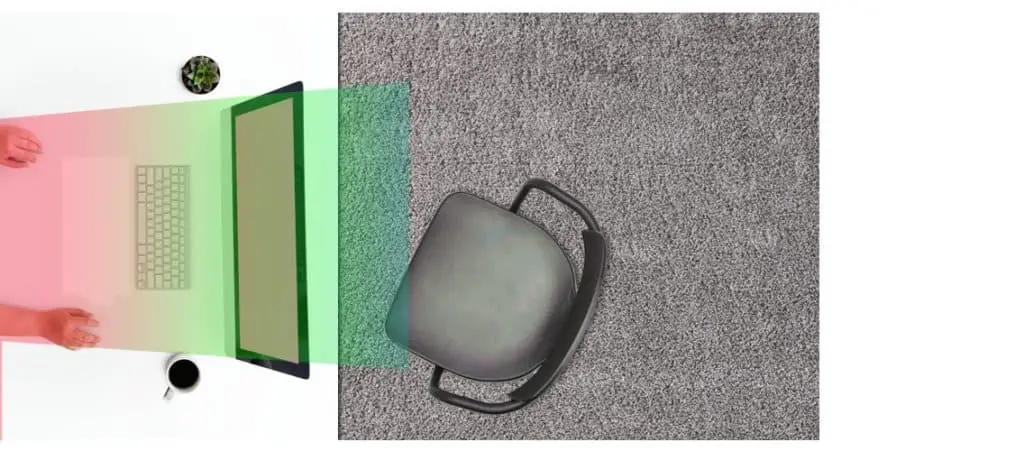
It sounds reasonable but normal progressive lenses will provide you with reading support only in the lower half of the lens. And if your screen sits on one level with your head you will not get the support without leaving your posture which could lead to neck pain. In such a case the Seiko Indoor PC progressive lenses will provide you with extremely wide and clear zones for your PC screen and reading up close.
The difference is so big from the normal progressive line up. You can perform eye movements from the left to the right and you have way less nose pointing into the direction you want to look at. It is really comfortable to get those lenses in addition. Some people aks now during the consultation. Why they just not go with the Seiko Indoor PC and the reason is this lens is not made for driving.
It is really good at the distance up to 1,50m. If you want to look at something that is further away it will get blurry. So you can not wear them outside. But I really will enjoy reading and working with them. This lens is not meant to get customized to your individual angles and distance. But with a very long progression corridor of 25mm, you get a great computer progressive lens.
Seiko INDOOR 100/200
We already talked about the indoor variant above which focuses the distance of 1,50m. The 100 and 200 here are actually specifications for the distance in cm where you can see clearly. The 100 variant has the bigger width in terms of clear vision in which you can perform eye movements from left to right but if you focus on something that is further away than 100cm your vision will get blurry.
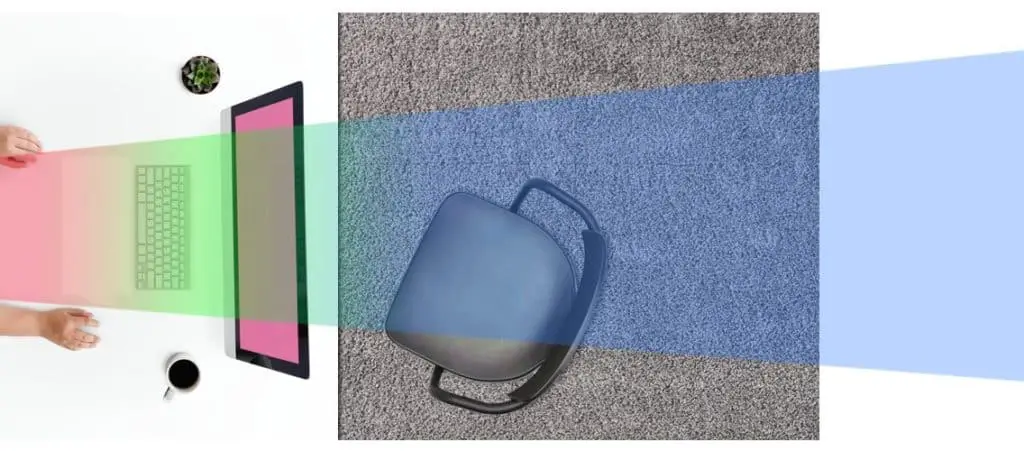
Of course, if you want these lenses to use for PC work of really detailed work you want to do in a close-range this lens design is perfect for you. But if you want to move around with your glasses on indoors you should consider the 200 variant. With this lens, you can focus very comfortably on a distance of 200cm.
But therefore you will lose a little bit of the width of the clear zones. Because if you add more difference of lens power into the upper and lower part of the lens your peripheral vision will get a little blurrier. You can experience this effect in every progressive lens design on the market from every manufacturer.
Now that you read about the progressive lens design options from Seiko it is time to talk about the different coatings you can choose from. Because no progressive glasses are complete without an anti-reflective coating.
Coatings for Your Progressive Lenses From Seiko
Seiko also is one of the manufacturers with really durable hardenings. If signs of wear are an issue for you those coatings are a good choice for you. But let us talk a little bit about the differences between them.
| SRC-UV | Extremely durable anti-reflective coating with enhanced UV protection on the backside (Super Resistant Coat – UV) |
| SRB-UV | Extremely durable anti-reflective coating with enhanced UV protection on the backside + blue light protection (Super Resistant Blue – UV) |
| SRC | Extremely durable anti-reflective coating (Super Resistant Coat) |
| SRB | Extremely durable anti-reflective coating + blue light protection (Super Resistant Blue) |
| RCC | Reduction of bright modern car headlights facing you. (Road Clear Coat) |
| SCC | Also fully coated but the hardening is not as durable as the SRC (Super Clean Coat) |
Which Seiko Progressive Lenses Will Give You the Best Value for Your Money?
If you start out with progressive lenses in your 40s your experience will be vastly different if you would start out in your 60s with progressive lenses. The reason is primarily the more needed lens power in the reading zone because your eyes lose the ability to accommodate the close range.
As your eyes lost the ability the added lens power in the reading zone will compensate for it. But it comes with a drawback. The higher the reading power has to be the more distortions you can notice in the lower half on the sides in progressive lenses. That´s why you can oftentimes getaway in your 40s with a lower prized lens without any problems whatsoever.
With the increasing amount of reading power, it might make more sense to get a more customized progressive lens design. This will be explained now.
Let us assume you have the following prescription:
| SPH | CYL | A | Add | |
| R | +1,00 | 2,50 | ||
| L | +1,50 | 2,50 |
The needed lens power on the description is totally common with a high Add value of 2,50D. This is totally typical if you are over 60 years old. In this case, the width of the reading zones is really just a few millimeters wide. And that only counts if the lenses are perfectly centered in front of your eyes.
But this happens only if the frame coincidentally sits in your face with a tilt of 8° with a distance of 12mm in front of your eyes and your pupilar distance has to fit the average perfectly of 32mm which often is not the case. Because most of the time people’s faces are shaped a little bit asymmetrically, a little bit wider or more narrow. Only the Prime Xceed takes this into consideration.

I give you an example that makes this a little clearer. A person that is very tall like 2m has pretty long arms. Therefore he will hold the newspaper at a certain distance which is comfortable for him to read it. He probably has a wider pupilar distance which fits his general bigger body. And as he looks down to read his eyes converge and look down through certain spots in the lens.
Now we have another person which is way shorter. He will hold the newspaper also at a certain distance. And every distance I just described with the tall person changes now. So do the certain spots where the person is looking through the lenses. If this is not considered your vision will be compromised. If your Add value is higher than +1,75D get the Prime Xceed.
But what if your Add value is lower than that? Let us say +1,50D. Your field of view in the near range will be a lot wider. It takes just takes you less time to adjust to the lenses as you will not notice the distortions in the periphery as much as with a higher add value. Now you can get away with a lower prized lens.
Because as you have more space to move your eyes from the left to the right you will not notice the difference as much if your pupilar distance is just 0,5mm bigger or smaller compared to the average one. If your PD is around 32mm you can get the Emblem or the Synergy extra. But if your pupilar distance is way smaller like 29mm or way bigger like 35mm I would still recommend the Prime X over the other lenses.
But that obviously depends on the wearer. Some wearers of progressive lenses will just have less expectations and they will be totally fine with the base model Vision X. Although I expect it to provide more distortions and a smaller reading zone. I understand if this all sounds a bit wishy-washy but the perception of people wearing progressive glasses is very different from another. Especially when it comes to a prescription like the one below.
| SPH | CYL | A | Add | |
| R | +6,00 | +1,50 | ||
| L | +6,50 | +1,50 |
At first, you might think a person with this Add value has no problems what so ever adjusting to the new progressive lenses and he will be fine with the Seiko Synergy Xtra. This may be true but it also highly depends on the way how the frame sits in his face. The reason is the blurry zones and distortions change if the frame sits more tilted or very straight in the face of the wearer.
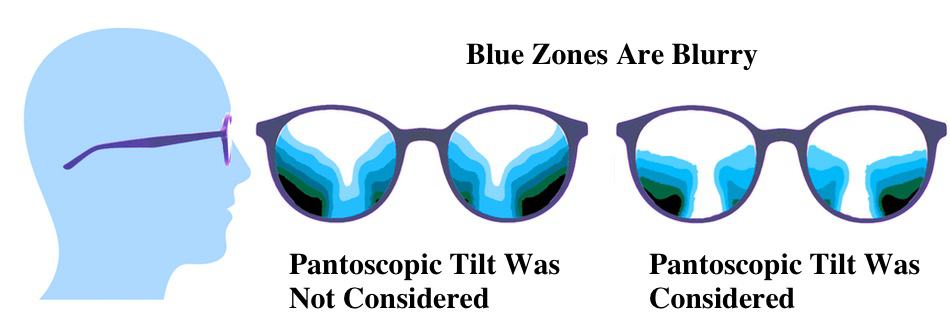
To a lot of people, this picture looks eye-opening if they already had progressives and they could not read at all with them. Because there was no reading zone whatsoever. If your prescription is higher like the one shown above this could happen with the following lens designs: Vision X, Synergy Xtra, Emblem Xtrawide, and Prime X. The only lens that considers this angle (pantoscopic tilt) is the Prime Xceed.
As your progressive glasses are always a combination of the selected frame and the progressive lenses you might avoid frames with very thick temples. Because you can not adjust the pantoscopic tilt afterward. If you go with such a frame you would be more forced to get the Prime Xceed if the tilt does not match up with the recommendation of 8-12° from Seiko.
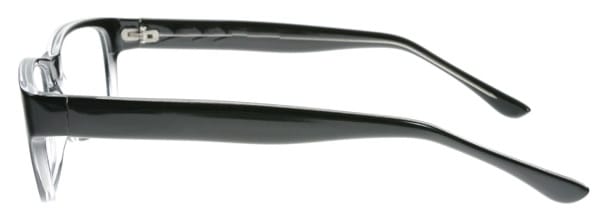
This picture above shows such a frame with very thick temples. Especially if you want some fancy plastic frame oftentimes adjustments are more restricted. Just look at the picture below and compare the differences between the temples. Here the pantoscopic tilt of your lenses could be changed easily.
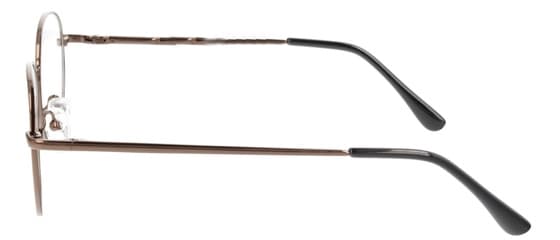
So you will probably have an easier time with such a frame if you choose progressive lenses like the Emblem Xtrawide in which customization of angles and distances is not possible.
The Cost of Seiko Progressive Lenses
The following prices may vary depending on the country you live in or the optician you go to. Please keep in mind your individual prescription can change these prices per piece.
| Prime Xceed | start at 670€ |
| Prime X | start at 630€ |
| Emblem Xtrawide | start at 530€ |
| Synergy Xtra | start at 450€ |
| Vision X | start at 340€ |
| Indoor PC | start at 260€ |
| Indoor 100/200 | start at 360€ |
These prices are not set in stone they could vary heavily depending on the store you buy. The question really is: do you get the best vision out of the technology if your prescription was measured in like five minutes and the centration was done before the frame was even adjusted for you? I highly doubt it.
Now you have read about the different lens models coatings and prizes. There is just one point we should mention here. And that sensitivity to brightness. If you are stressed about the sun’s glare at times you should know about the following options in tints to your progressive lenses.
Photochromic Progressive Lenses From Seiko
You can get different options here. The first is the Sensity line up which offers the colors brown, grey, and green. It comes in two versions Sensitiy Dark and Sensity. If you stay in a very hot climate or you just prefer extra dark lenses that also tint behind the windshield in your car more you should go with the density dark.
The second version is probably the best known on the market but frankly spoken pretty similar to the Sensity line up. It is Transitions. Both options are extremely clear as long as you stay indoors and get darker (comparable to normal sunglasses) if you go outside.
For the last years, the sensity lineup was a little bit faster in the change from dark to clear but now with the newer Transgen8 version, there will be hardly any differences in change times.
Progressive Lenses With Polarization From Seiko
If you want a separate pair of sunglasses which polarization which I can highly recommend you have a really nice option with Seiko progressives. The reason is they offer the Polarthin variant which makes your polarized lenses thinner compared to other manufacturers. Seiko is able to add just 0,4mm to your progressive lens design which gives you a minimal thickness in your lenses.
Most manufacturers will add 0,8mm up to 1mm of thickness to your lenses to be able to get the polarization in.
That is the buyer´s guide to progressive lenses from Seiko. I hope you have found the information you needed to decide what lenses you choose. Always keep in mind that the best progressive lenses out there still have just a little zone left for your PC work. And even if the all-day progressives have all distances built-in those lenses are not made for long hours in front of your PC. Just get a second pair of computer progressive glasses.
I can highly recommend this if your Add value is higher than +1,25D. Because with this strategy you get the best out of two worlds. In your everyday tasks, you just have the focus right when you need it. The phone, your car dashboard, or a price tag in the shopping mall. This is the perfect use for your progressive lenses. And when you arrive at work or at home you can switch to your indoor progressives to get the widest view possible in the near range.
I wish you a great day.
